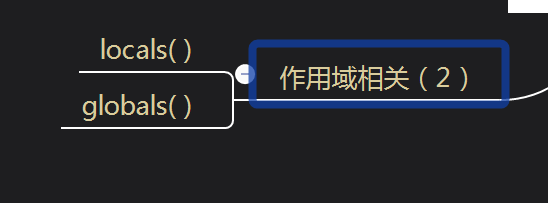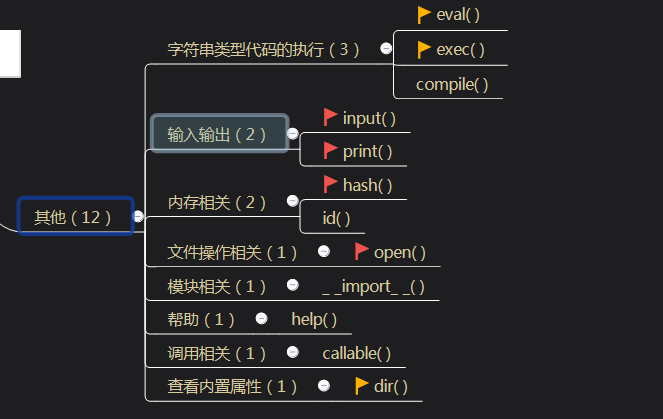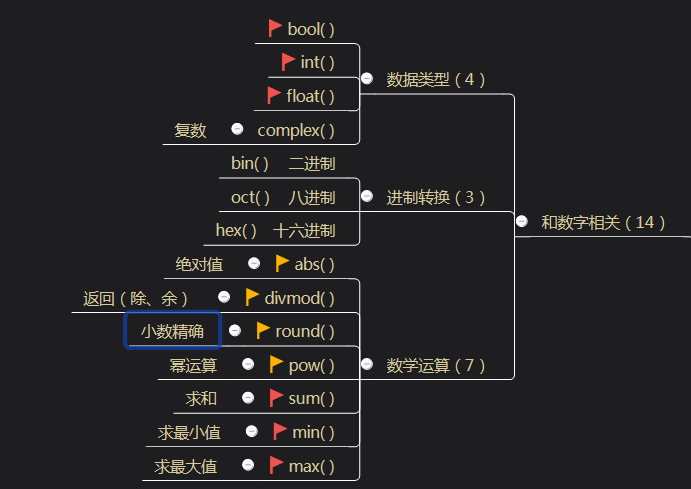05python 的內置函數以及匿名函數(python函數)
阿新 • • 發佈:2019-01-08
abs 3.6 object 叠代 pytho std for 函數 word
內置函數
截止到python版本3.6.2,現在python一共為我們提供了68個內置函數。它們就是python提供給你直接可以拿來使用的所有函數。

作用域相關

print(globals()) # 返回本地作用域中的所有名字 print(locals()) # 返回全局作用域中的所有名字 註意與函數中的global、local、nonlocal 關鍵字的區別
生成器叠代器相關

for i in range(10): print(i, end=‘ ‘) >>>0 1 2 3 4 5 6 7 8 9 fori in range(1, 10, 2): print(i, end=‘ ‘) >>>1 3 5 7 9

其他

dir() # pass print(callable(func)) # callable()接受一個函數名則返回True,接收其他變量返回False,可用於判斷變量是否為函數!雞肋 help() # 雞肋 import # 導入模塊 open() #打開文件 hash() # 字典中的鍵所對應的就是hash值 ------------------------------------------------ input() # 用於與命令行的交互 print() # 查看print的源碼 def print(self, *args, sep=‘ ‘, end=‘\n‘, file=None): # known special case of print """ print(value, ..., sep=‘ ‘, end=‘\n‘, file=sys.stdout, flush=False) Prints the values to a stream, or to sys.stdout by default. Optional keyword arguments: file: a file-like object (stream); defaults to the current sys.stdout. sep: string inserted between values, default a space. end: string appended after the last value, default a newline. flush: whether to forcibly flush the stream.""" pass print(1, 2, 3, sep=‘|‘) >>>1|2|3 f = open(‘file‘, ‘w‘) print(‘aaa‘, file=f) # 打印內容到指定文件 ----------------------------------------------------------------------- eval(‘print(123)‘) exec(‘print(123)‘) print(eval(‘1+2+3+4‘)) # 有返回值 print(exec(‘1+2+3+4‘)) # 無返回值
和數字處理相關

print(round(3.1415926, 2)) # 限制小數後幾位 >>>3.14 print(pow(2, 3)) >>> 8 print(pow(2, 3, 2)) # 2的3次方 / 2 取余 >>> 0 print(sum([1, 2, 3, 4, 5])) print(sum([1, 2, 3, 4, 5], 10)) # sum(iterator, star) >>> 15 25 ----------------------------------------------------------------------------------- print(min([1, 2, 3, 4, -5])) print(min([1, 2, 3, 4, -5], key=abs)) # 還可以接收函數 >>> -5 1
未完待續。。。
05python 的內置函數以及匿名函數(python函數)
